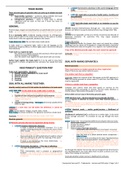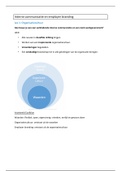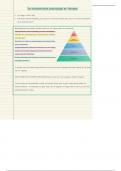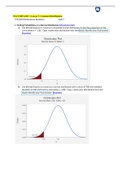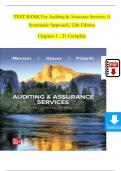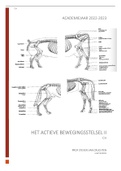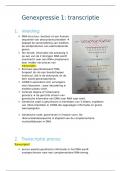3. s.3(1)(d) Has become customary in the current language of the
TRADE MARKS trade:
Eg. Velcro or Blue tack
There are two types of questions that can come up in relation to trade
marks: 4. s.3(3) Not registrable on grounds of public policy, morality and
1. Registrability questions – questions asking whether the trade deceptiveness:
mark (as selected by the client) can be registered. Eg. Jesus (religious grounds), Inter City firm (gang name), Dairy
2. Infringement questions – where a trade mark is already Gold (deceptive if the product has no dairy content)
registered and we want to find out if there has been an
infringement. 5. s.3(6) Bad faith (trade mark theft or no intention to use the
mark *rare*
GENERAL:
UNLESS Acquired distinctiveness through use – but exercise caution
Protects logos, slogans and anything that can potentially serve as a trade because use before it acquires distinctiveness may infringe other TMs.
mark. - eg. even colours and shapes, but not smells, sounds and tastes.
Colours:
It is a monopoly right: incidental copying amounts to infringement, Unlikely to be registrable as they are merely ornamental and devoid of
those without rights in the trade mark cannot use the same or a similar distinctive character. To overcome this, may argue acquired
trade mark to the one registered, whatever the reason. distinctiveness.
Trade Marks Act 1994 The act that covers trade marks. Shapes (3D marks):
s.3(2) Additional hurdle for shapes: they must not simply be a shape
A trade mark is a territorial right, valid in the UK (register at the resulting from the nature of the goods or a shape that gives a technical
Intellectual Property Office). A similar rights exist in the EU (EUTM) and effect/substantial value to the good. If so, register it as a patent/design.
internationally.
If any of the absolute grounds apply, the mark cannot be registered.
Trade mark is a registered right:
- Pro: there is no register to prove the existence of the trade mark Conclude: None of the absolute grounds apply, so registration will not
without having to fund litigation fail under s.3 TMA.
- Con: the owner must register the work which will cost money
Author must register the trade mark for it to be valid or may claim
passing-off if remains unregistered but someone has copied the trade DEAL WITH MARKS SEPARATELY:
mark.
Relative grounds:
REGISTRABILITY QUESTION PREP There must also be no relative grounds to refuse registration.
Trade mark registrability - Structure: Check if there are any similar marks to yours.
1. Identify mark(s), definition of a trade mark?
2. Absolute grounds If no similar mark from a competitor:
3. Relative grounds
4. Duration Conclude: Subject to a search of the TM register at the IPO applying s.5
5. Conclude TMA, no relative grounds to refuse under s.5 and thus, the trade mark
may be registrable.
DEAL WITH ALL MARKS TOGETHER: If there is a similar mark from a competitor:
Identify mark(s) and see if it falls within the definition of a trade mark: Compare your client’s mark and their goods or services to the
competitor’s mark and goods or services. Are the marks identical or
s.1(1) TMA 1994 For the mark to be a trade mark, it must be: merely similar? What about the goods or services?
1. A sign – anything that can be apprehended by the senses, logos,
pictures, texts, shapes, sounds, tastes, smells Select which one (or two) of the below grounds apply.
2. Capable of clear and precise graphical representation – must be
clear, precise, self-contained, easily accessible, intelligible, s.5(1) Identical mark + identical goods/services (Double identity)
durable and objective Cannot register if identical to earlier mark AND Identical goods or
AND services.
3. Capable of distinguishing – Remington Inherently satisfied if the Eg. AMBER Business is not identical to AMBER, but if the text for both
mark is a sign. marks is Crystal with simple differences in stylization, then the marks can
be said to be identical
s.3(1)(a) If a mark does not fall within the definition, it cannot be
registered. s.5(2)(a) Identical marks + similar goods/services + likelihood of
s.3(2) Cannot register: shapes, sounds, taste, smells confusion:
Elvis Presley A cursive rendition of a signature cannot be a trade mark.
Likelihood of confusion (LoC): confusion as to trade origin, in the mind
Conclude: All marks fell into the definition under s.1(1) TMA. of the average consumer. To conclude on LoC, go through the tests
below.
Absolute grounds:
Canon ‘Global’ test – list similarities/differences between the two marks:
s.3 Absolute grounds that lead to registration being refused: 1. Brand name similar?
2. Product functions similar?
1. s.3(1)(b) Devoid of distinctive character: 3. Similar end-users?
• A mark is devoid of distinctive character if it is not 4. Point of view of Average consumer:
capable of distinguishing the company who owns it from • Reasonably well-informed and circumspect consumer -
other brands. - if the mark has nothing unique about it. how the average consumer will likely react is a question
Eg. round numbers like 100, slogans that can apply to any for the court to decide.
other company, colours • Sees the mark as a whole without direct comparison –
• Overused words can still be distinctive if used for a brand Sabel v Puma
that has nothing to do with the meaning of the word – • Attention varies according to the type of goods/services
eg. Apple for computers More expensive/specialised = more attention - eg. if the
• If mark is not distinctive: file more distinctively - eg. product is bought by professionals/specialists, the
slogan and logo together average consumer of the product will be held to a higher
standard as they will be able to make finer distinctions
2. s.3(1)(c) Exclusively descriptive – if the sign is indicating: between different types of products.
• The type of goods/services – eg. lemon logo for lemon
juice Go through the ‘Global’ test one by one but recognize that these factors
• Their chrematistics such a purpose or geographical are interdependent, you must allow them to paint a picture as to Loc,
location – eg. Froot Loops for fruit flavoured cereal, rather than relying on one factor.
Doublemint for chewing gum or Palermo for wine made
in Palermo Conclude whether similar and as to likelihood of confusion.
Commercial Law and IP – Trademarks – Lecture and SGS notes | Page 1 of 4

